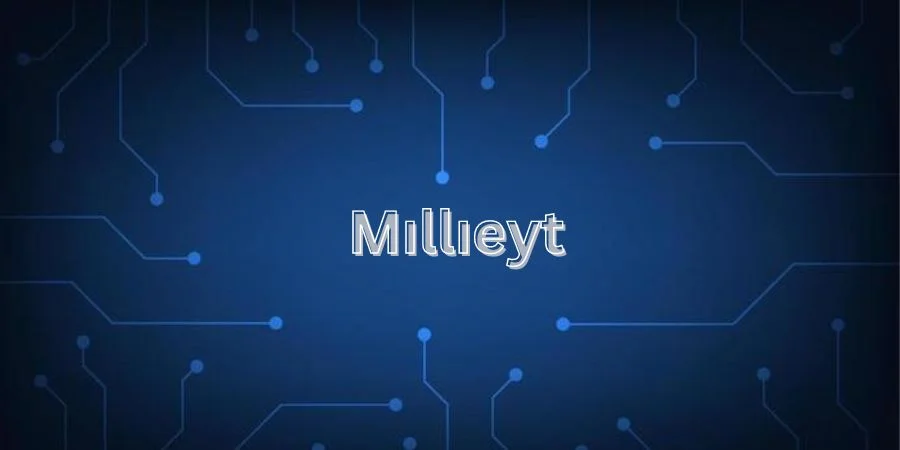Mıllıeyt is more than just a word; it’s a concept deeply woven into the fabric of its culture. But what exactly does it mean? At its core, Mıllıeyt encapsulates a unique blend of tradition, identity, and community, often linked to the historical and cultural heritage of a specific region or people.
Historical Background
The origins of Mıllıeyt date back centuries, with its roots firmly planted in the early civilizations of the region. It has evolved, adapting to various influences and changes in society, yet maintaining its essence. Understanding its history helps us appreciate its significance in today’s world.
The Cultural Significance of Mıllıeyt
Role in Society
Mıllıeyt plays a crucial role in shaping societal norms and values. It acts as a binding force, bringing together people through shared customs and beliefs. Whether through festivals, rituals, or everyday practices, Mıllıeyt influences how people interact and perceive their world.
Traditional Practices
From birth to death, Mıllıeyt encompasses a wide range of traditional practices. These rituals not only preserve the cultural heritage but also provide a sense of belonging and continuity for the community.
Geographical Roots of Mıllıeyt
Origins and Spread
Originally rooted in a specific geographical area, Mıllıeyt has gradually spread to other regions. This spread can be attributed to migration, trade, and other forms of cultural exchange. Understanding its geographical origins gives insight into its diverse manifestations.
Key Locations
Certain locations are considered the heartlands of Mıllıeyt, where its presence is most strongly felt. These places often serve as cultural hubs, attracting people who seek to experience and learn about Mıllıeyt firsthand.
Mıllıeyt in Modern Times
Contemporary Relevance
In today’s fast-paced world, Mıllıeyt continues to hold relevance. It adapts to modern contexts while retaining its core values, making it a dynamic part of contemporary culture.
Modern Adaptations
While the essence of Mıllıeyt remains unchanged, its practices have seen various adaptations to fit modern lifestyles. These adaptations ensure that Mıllıeyt remains accessible and meaningful to younger generations.
Key Figures in the History of Mıllıeyt
Influential Personalities
Throughout history, several key figures have played pivotal roles in the development and propagation of Mıllıeyt. These individuals, through their contributions, have left an indelible mark on its evolution.
Contributions and Legacy
The legacy of these figures is evident in the enduring presence of Mıllıeyt in contemporary society. Their contributions have helped shape its current form and ensure its preservation for future generations.
Myths and Legends Surrounding Mıllıeyt
Popular Myths
Mıllıeyt is surrounded by a rich tapestry of myths and legends. These stories, passed down through generations, add a layer of mystique and depth to its cultural significance.
Impact on Culture
These myths and legends influence not only the cultural practices but also the collective imagination of the community. They serve as a source of inspiration and a way to connect with the past.
Mıllıeyt and Spirituality
Religious Connections
Mıllıeyt is deeply intertwined with spirituality and religion. Its practices often reflect the religious beliefs and values of the community, providing a spiritual framework for daily life.
Spiritual Practices
Beyond religious rituals, Mıllıeyt includes various spiritual practices aimed at personal growth and community well-being. These practices foster a sense of inner peace and communal harmony.
The Language of Mıllıeyt
Linguistic Characteristics
The language associated with Mıllıeyt is rich in symbolism and meaning. Understanding its linguistic features can provide deeper insights into the cultural nuances of Mıllıeyt.
Symbolism and Meaning
Language is a powerful tool in preserving and conveying the essence of Mıllıeyt. Its symbolic use in rituals and storytelling helps keep the cultural heritage alive.
Art and Mıllıeyt
Traditional Art Forms
Mıllıeyt is beautifully expressed through various traditional art forms. These artistic expressions serve as a visual representation of its cultural values and aesthetics.
Modern Interpretations
In modern times, artists continue to draw inspiration from Mıllıeyt, creating works that bridge the gap between tradition and contemporary art.
Music and Mıllıeyt
Traditional Music
Music is a vital aspect of Mıllıeyt, with traditional tunes and instruments playing a key role in cultural ceremonies and festivities.
Influence on Modern Genres
The influence of Mıllıeyt extends to modern music genres, where elements of traditional music are blended with contemporary styles to create new, unique sounds.
Mıllıeyt in Literature
Classic Works
Literature has always been a medium to express the values and stories of Mıllıeyt. Classic works of literature provide a window into the historical and cultural context of its origins.
Contemporary Writings
Contemporary writers continue to explore and reinterpret Mıllıeyt, ensuring that its stories and values remain relevant and accessible to modern audiences.
Festivals and Celebrations
Major Events
Festivals and celebrations are key expressions of Mıllıeyt. These events bring the community together, fostering a sense of unity and shared cultural identity.
Cultural Importance
Each festival and celebration has its significance, often linked to historical events or seasonal changes, reflecting the community’s connection to its heritage and environment.
Challenges Facing Mıllıeyt Today
Preservation Issues
In the face of globalization and rapid societal changes, preserving Mıllıeyt poses significant challenges. Efforts are needed to document and protect its practices and traditions.
Globalization Effects
While globalization brings opportunities for cultural exchange, it also threatens the unique aspects of Mıllıeyt. Balancing modernization with preservation is crucial for its survival.
The Future of Mıllıeyt
Potential Developments
Looking ahead, Mıllıeyt has the potential to evolve in exciting ways. Innovations in cultural expression and new forms of community engagement can help keep its traditions alive.
Youth Engagement
Engaging the younger generation is vital for the future of Mıllıeyt. By involving youth in its practices and encouraging their participation, we can ensure its continued relevance.
Conclusion
In unraveling the mysteries of Mıllıeyt, we uncover a vibrant tapestry of culture, tradition, and community. Its enduring presence in modern times is a testament to its adaptability and significance. By understanding and preserving Mıllıeyt, we not only honor the past but also enrich our present and future.
